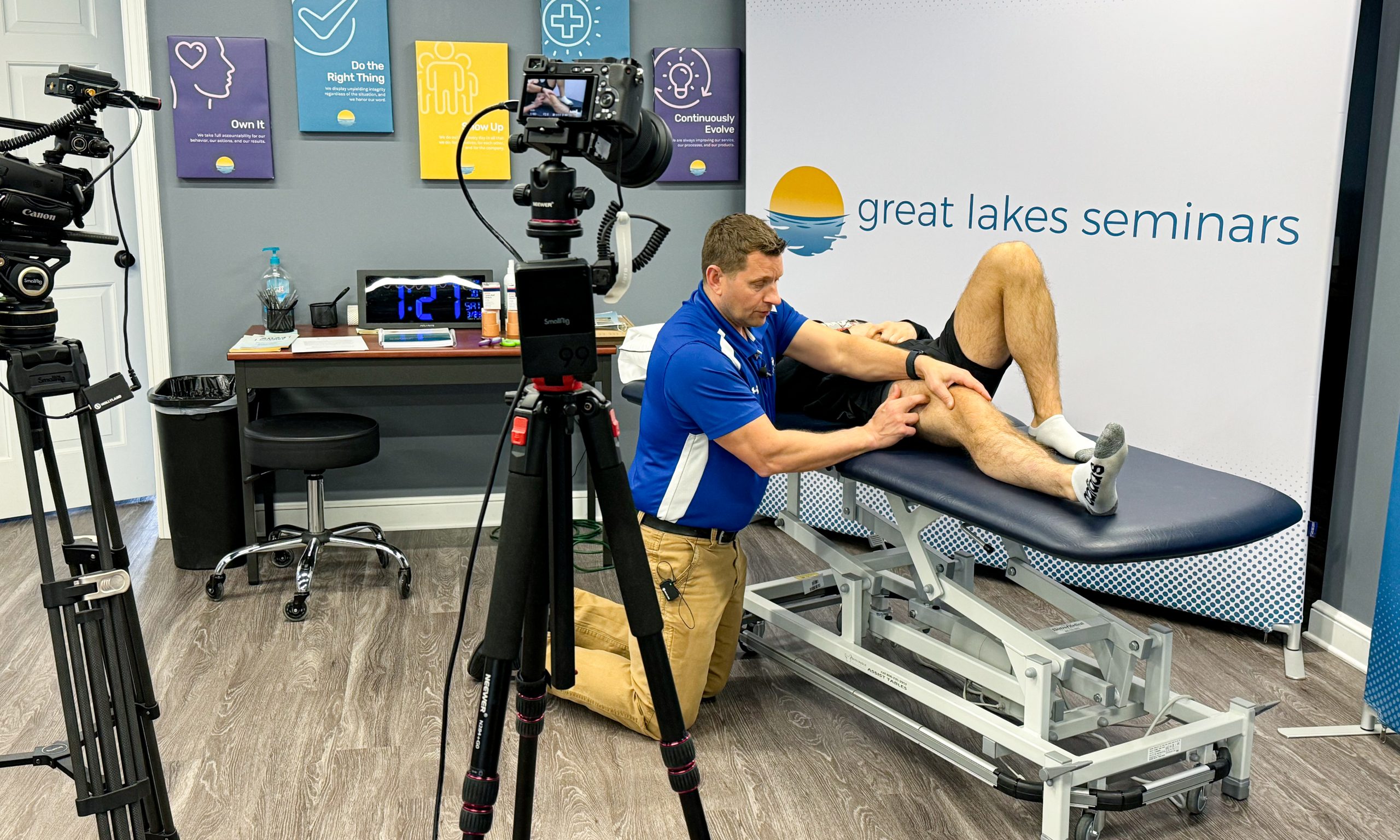Building Confidence and Clinical Mastery: Jessica’s CIMT Story

Early in her career, Jessica knew she wanted to be more than just a good physical therapist — she wanted to be great. That desire for growth started when she met a manual therapist in her clinic and saw the incredible results he was achieving with his patients. “I knew that was where I wanted to go with my career,” she shared.
Discovering Great Lakes Seminars
Jessica’s journey toward certification began when she took her first Great Lakes Seminars course. “I was hooked from the organization of it, from the style of teaching, from the approachability of the teachers,” she said. What stood out most was how much she could apply immediately: “I really felt like I left that first course with a lot of useful information that I could apply right away.”
As she continued through more courses, she noticed how each one built on the last. “There was a lot of overlap from the initial course,” she explained. “Each course after that helped solidify my knowledge base.”
Lessons That Changed Jessica's Approach
Throughout her certification journey, two concepts stood out to Jessica as the most impactful:
Test, Treat, Retest
“This concept changed how I worked with patients,” Jessica shared. Before, she sometimes found that patients would feel better after a session — only to have their pain return later. The test, treat, retest model helped her immediately see whether her treatment was effective. “It made the incidents of patients coming back with residual pain much less likely,” she said.The JMFC Model – Joint, Muscle, Fascia, Compensation
Jessica credits this model with transforming the way she sees complex patients. “It helped me look beyond the typical problems I would see,” she explained. As word spread about her results, she began treating more and more complex cases — but instead of feeling overwhelmed, she felt equipped. “I was able to still get better results for those patients.”
Connecting the Dots Through Synthesis
One of the biggest turning points in Jessica’s learning came during the Synthesis course, the final step toward becoming a Certified Integrated Manual Therapist (CIMT).
“They do a really great job bringing all of the courses together,” Jessica said. “They help you understand how to look outside the box — not just at what to assess and treat, but why it’s like that.” That deeper understanding helped her see beyond isolated joints or regions and instead treat the body as an integrated system.
Confidence to Treat Complex Cases
Looking back, Jessica sees just how far she’s come — not only in her technical skills but also in her confidence as a clinician. “As I’ve progressed through my career, I’m able to treat the more complex patients,” she said. “It’s not something that’s fearful because I have the tools in my toolbox to help them.”
For Jessica, becoming a CIMT wasn’t just about earning a certification. It was about becoming the kind of therapist she always wanted to be — one who understands why things happen, connects the dots, and delivers meaningful results for every patient.
Questions? Check out these FAQs!
CIMT stands for Certified Integrated Manual Therapist. It’s a structured certification program through Great Lakes Seminars designed to help physical therapists and athletic trainers integrate advanced manual therapy, clinical reasoning, and movement-based approaches into their practice.
Most clinicians complete the CIMT in about 2-3 years, depending on how quickly they progress through the required courses and testing. You can move at your own pace based on your schedule and goals.
The CIMT consists of a series of core manual therapy courses, elective options, and the final Synthesis course, where you’ll bring all your skills together in an integrated, case-based format. Nine prerequisite courses need to be completed before attending the final certification course, Synthesis.
Synthesis is the final course in the CIMT certification process. It helps participants “connect the dots” by integrating all prior coursework into a comprehensive, big-picture approach.
No, there’s no required order for the CIMT prerequisite courses. You can take them in any sequence that fits your interests and schedule.
No. Synthesis is only available for Physical Therapists (PTs) and Athletic Trainers (ATCs).
The JMFC model stands for Joint, Muscle, Fascia, Compensation. It guides therapists to assess the body systematically—from joint mobility, to muscular involvement, to fascial restrictions, and finally compensatory patterns.
You can explore the CIMT certification page here: https://glseminars.com/courses/view-course-info/synthesis/
If you’ve already taken a few GLS courses and want to know how far along you are in the CIMT certification process, send us an email at info@glseminars.com! We’ll let you know exactly which prerequisite courses you’ve completed and which ones you still need to finish your certification.
Share this article:

